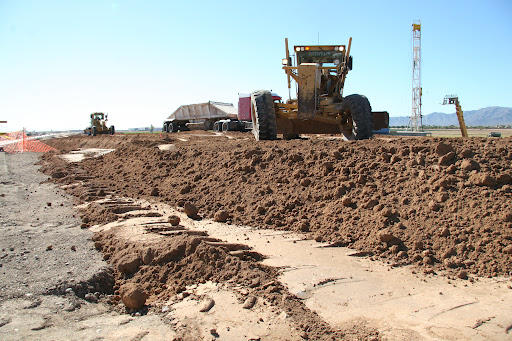Utility relocation sometimes necessary during project construction
Utility relocation sometimes necessary during project construction

Before construction starts, ADOT works to make sure utilities will not conflict with project design.
“Utility relocation” is a phrase that might sound familiar if you get our traffic alerts.
A fairly self-explanatory term, it refers to the moving of underground or overhead utilities (things like cable, telephone, electricity, sewer, water or gas lines).
ADOT occasionally will announce that a portion of road temporarily needs to be restricted due to these utility relocations, but have you ever wondered why they get moved?
Utility relocation is necessary if the line (or cable, wire, etc.) is in the way of an upcoming roadway project (think new roads, widening of existing roads, realignments, etc.) or maintenance work (something like the addition of a new drainage pipe or box culvert).
Normally these relocations are done before ADOT starts on the project.
“When a project is being designed, our design team will typically designate one person as a utility coordinator,” according to Transportation Engineering Specialist Brandon DeCarlo.
It’s the job of those coordinators to work with the utility companies and identify whether or not the underground or overhead utilities will conflict with the project design.
“Our goal is to make the project run as smoothly as possible,” said DeCarlo, adding that’s the reason why it’s important to get any utility lines moved out of the way first because otherwise crews could run into delays.
A little more on utilities and ADOT
Utilities have the opportunity to apply for permission to occupy highway right-of-way. The permitting process might be a blog post topic for another day (it’s a big topic), but in the meantime you can get information on how its handled on ADOT’s Utility and Railroad Engineering section webpage.

